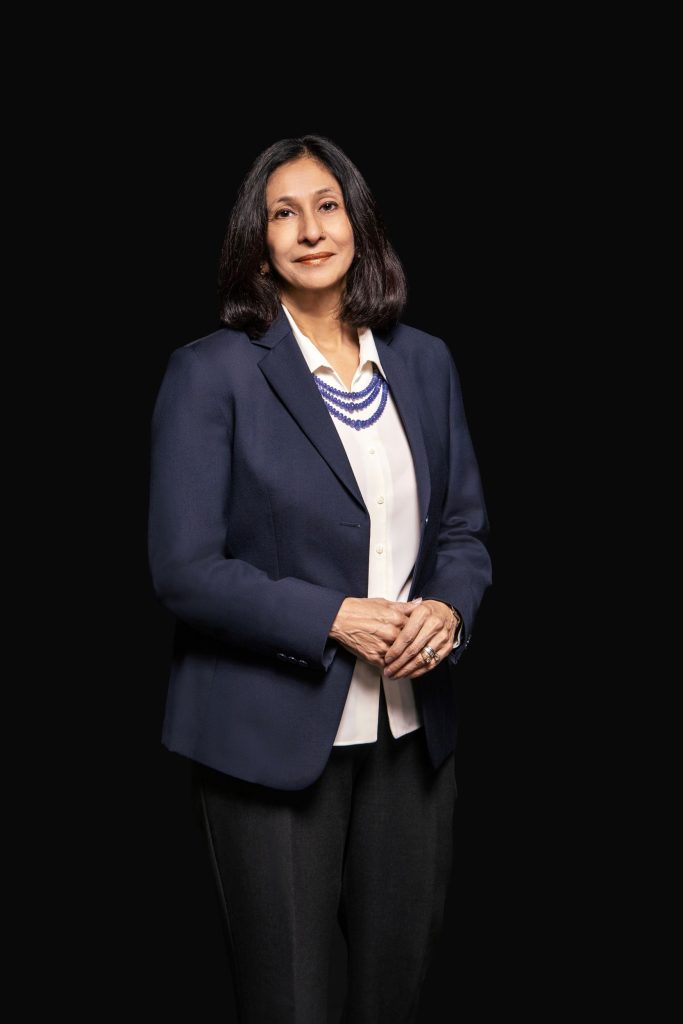A Q&A with Nina Chatrath
When seeking the right leader, many executives rely on intuition. However, today’s data-driven world provides the tools to validate or challenge these instincts. Identifying and retaining leaders who can navigate challenges and align with organizational culture is crucial. Executive assessment evaluates leaders who can effectively drive vision, enhance performance, and foster positive change, empowering organizations to make informed decisions about their talent pool.
We asked Nina Chatrath, Partner, Leadership Consulting, to share some insights on executive assessment and what makes it a powerful tool in evaluating leaders.

Meet Nina Chatrath
Nina Chatrath, Partner, Leadership Consulting, has over 20 years of business and consulting experience. She focuses on the impact of leadership on business performance, organization building, and the management of talent. A trusted advisor, Nina guides organizations to excellence by unlocking the potential of human capital.
How do you ensure maximum impact from the use of executive assessments?
I’m first going to give you a sense of why we use executive assessments, because we talk a lot about the fact that we need to do executive assessments – but I think what we miss out on is “what is the context and background of assessments?” I think that’s the part which I feel that if you get it right with your client, then assessment is just a logical thing to do.
Executive assessment, on one hand, is about the context and background of assessment; while on the other hand, it is about being in the know of what the organization is really going through. Before conducting assessments, we first need to understand why executive assessments are being done in the first place. We ask the real question, “What problem are we trying to solve?” And “What are the results going to be used for?” Therein lies the answers on how to customize the assessment for maximum output.
In addition, we seek and collect multiple data points and use them as lead indicators. Tools may just be the front end, as data indicators, but using your “assessment hat” and triangulating data provides you with real results.
Since assessments provide a lot of data on leaders, it’s necessary to triangulate the data and make sense of it. For example, how do you define a person’s competencies based on the picture that emerges from the assessment? Or when you simulate an environment in which a person is in, how do you determine what decisions to make and how do you communicate those decisions? Additionally, we create a report for the organization on their high potentials through assessment methodology. There is a likelihood of the same data getting interpreted in different ways, keeping in mind what your objective is. At DHR Global, we probe for the real objective for conducting executive assessments and accordingly use sophistication in our assessment process.
Can you share key examples of your work where executive assessment was especially effective?
The first example I’ll share is about a global organization that needed to right-size its structure – reducing headcount from more than 200 leaders at the top, down to only 120. We first needed to understand which leadership competencies the organization wanted their top leaders to possess, and secondly, what the lens of identifying those leaders should be. This competency model was the nerve center. It served as our focus to identify the leaders who had a higher fit with the defined leadership competencies.
Having understood the desirable competencies, we created a robust standardized process to assess them in the leaders through multiple data points. As we worked through assessment data, we needed to provide very logical definition as to why those 80 people were not meeting the mark. Since they fell short in the key competencies, their fit was in question.
The second example that I wish to share is of assessments being carried out as determined by the business environment. Our client identified three categories – growing market, steady market, and degrowing market – and wanted a relevant leader for each market.
The type of leader in the growing market would have to be aggressive, know the territory, have fire in the belly, and drive his or her team. The leader in the steady market needed to optimize, conserve, and be ready to take more market share from competitors. In the degrowing market, we needed to have leaders who could ascertain who the real rockstars are that can reign steady, and go back to the markets and determine who can grow from their competitors. We were given 80 top leaders, and we used executive assessment to determine who would be the best leader for each market. This example proves the theory that market-fit competencies in leaders makes them successful in their markets.
What else can you tell us about the executive assessment process?
Executive assessment is a process of systematic and objective deselection, rather than a process of selection. And there are multiple rounds of discussions that are held to ensure that all aspects of the initiative are well understood and conducted.
As the iterative rounds of assessment are conducted and each round becomes sharper and sharper, it helps us reach the desirable outcomes. This process can go on for weeks at a time, and all along there is communication that needs to be maintained. Leaders need to have faith in the assessment process, and therefore, communication needs to be maintained with them. Usually, the executive assessment exercise ends by going into a development phase. From there, we help leaders improve their skills, preparing them for the experiences that will help move them forward while minimizing behaviors that could hold them back.
For best results, we customize our approach to our clients’ business context and time frame. By leveraging scientifically proven leadership assessment tools that cover cognitive skills, personality, role fit, and more, we deliver holistic and in-depth insights to help inform organizations’ critical talent decisions.
Choose the Right Leader Confidently
When searching for the right leader, many executives go with their gut. Today, with data and predictive models, the subjective “gut feeling” now has the data and analytics to confirm or disprove a leader’s potential.

Introducing: Leader Lens
Proven to Predict Performance: Leader Lens directly correlates to executive performance.
Developed with in-depth interviews and performance data that reveal how to best predict whether an individual possesses essential traits that make leaders successful.
The proven case study approach and methodology provide an analysis that is predictive of future executive performance.
